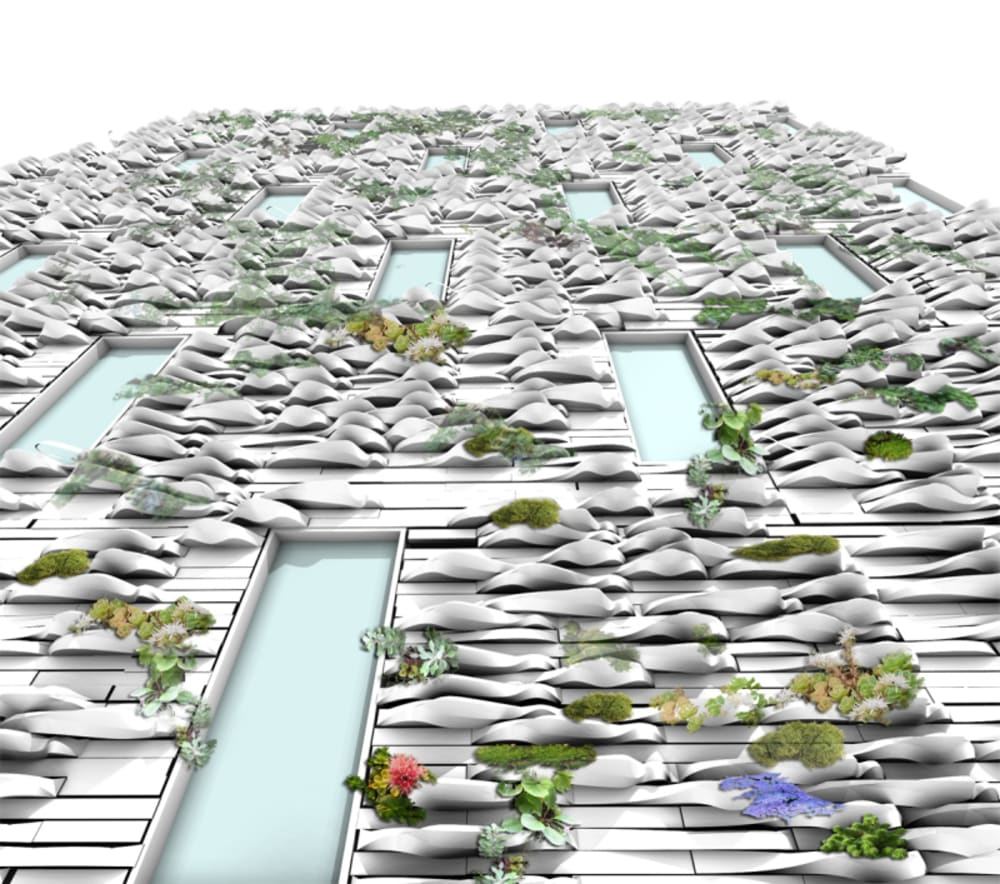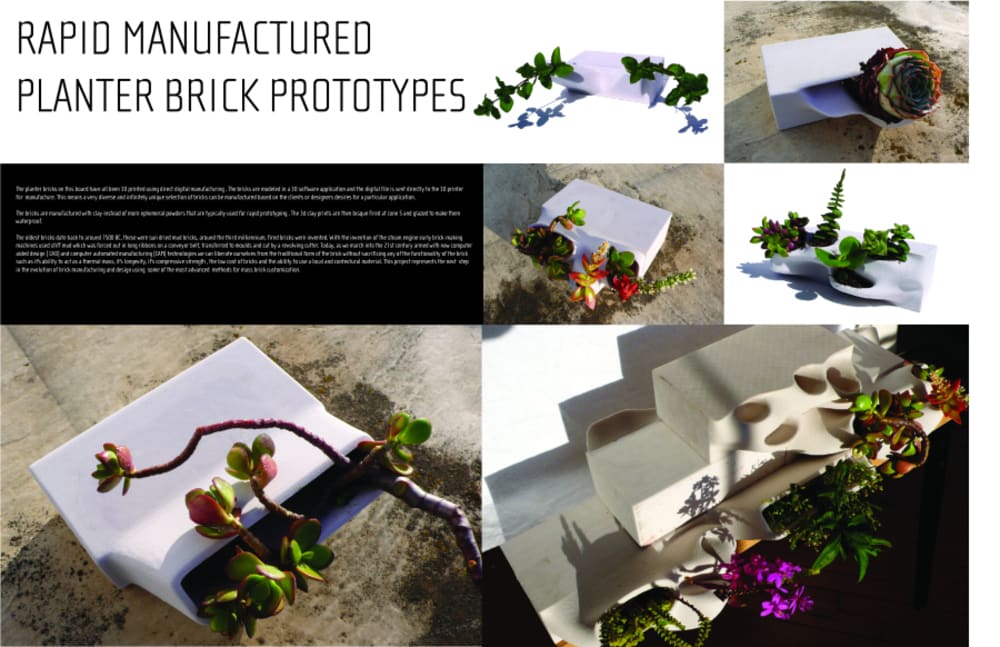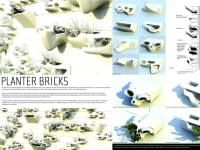The planter brick wall is designed to be a combination of traditional masonry units combined with units that can hold plants and vegetation. The plants matched with the bricks require little, if any, soil, but they do need water and nutrients.
The planter bricks have the potential to counter the heat island effect in big cities through evapotranspiration and pollution conversion and by the light, reflective color of the bricks. Additionally, edible plants such as rosemary and other fragrant herbs with shallow root systems may be planted in the bricks and accessed through openings in the wall. The plants in the bricks will help mediate the temperature of the microclimate surrounding the building, buffer sound and filter the air. The plants held in the planter bricks will be fed water and nutrients through drip irrigation lines that are built into the cavity of the masonry wall.
The indentations in the bricks that allow for irrigation act much like weep holes allowing water and nutrient to move through a network of continuous drip irrigation tubes that run within the cavity of the masonry wall. The water for the irrigation may be pumped up from below or gravity fed from a cistern or water collection device on the roof.
The planter bricks are made by direct digital manufacturing and rapid prototyping technology. Ceramic particles are printed and held together using an organic binder and then fired in a kiln just like traditional bricks. The bricks may be assembled in a load bearing cavity wall condition or installed as a traditional masonry curtain wall would be on a steel or concrete frame building and can be installed new or retrofitted.
The planter bricks are 3D printed using direct digital manufacturing . The bricks are modeled in a 3D software application and the digital file is sent directly to the 3D printer for manufacture. This means a very diverse and infinitely unique selection of bricks can be manufactured based on the clients or designers desires for a particular application. The bricks are manufactured with clay instead of more ephemeral powders that are typically used for rapid prototyping . The 3d clay prints are then bisque fired at cone 5 and glazed to make them waterproof.
The oldest bricks date back to around 7500 BC, these were sun dried mud bricks, around the third milliennium, fired bricks were invented. With the invention of the steam engine early brick-making machines used stiff mud which was forced out in long ribbons on a conveyor belt, transferred to moulds and cut by a revolving cutter. Today, as we march into the 21st century armed with new computer aided design (CAD) and computer automated manufacturing (CAM) technologies we can liberate ourselves from the traditional form of the brick without sacrificing any of the functionality of the brick
Like this entry?
-
About the Entrant
- Name:Virginia San Fratello
- Type of entry:teamTeam members:Virginia San Fratello
Ronald Rael
Molly Reichert
Al Filart - Patent status:none








